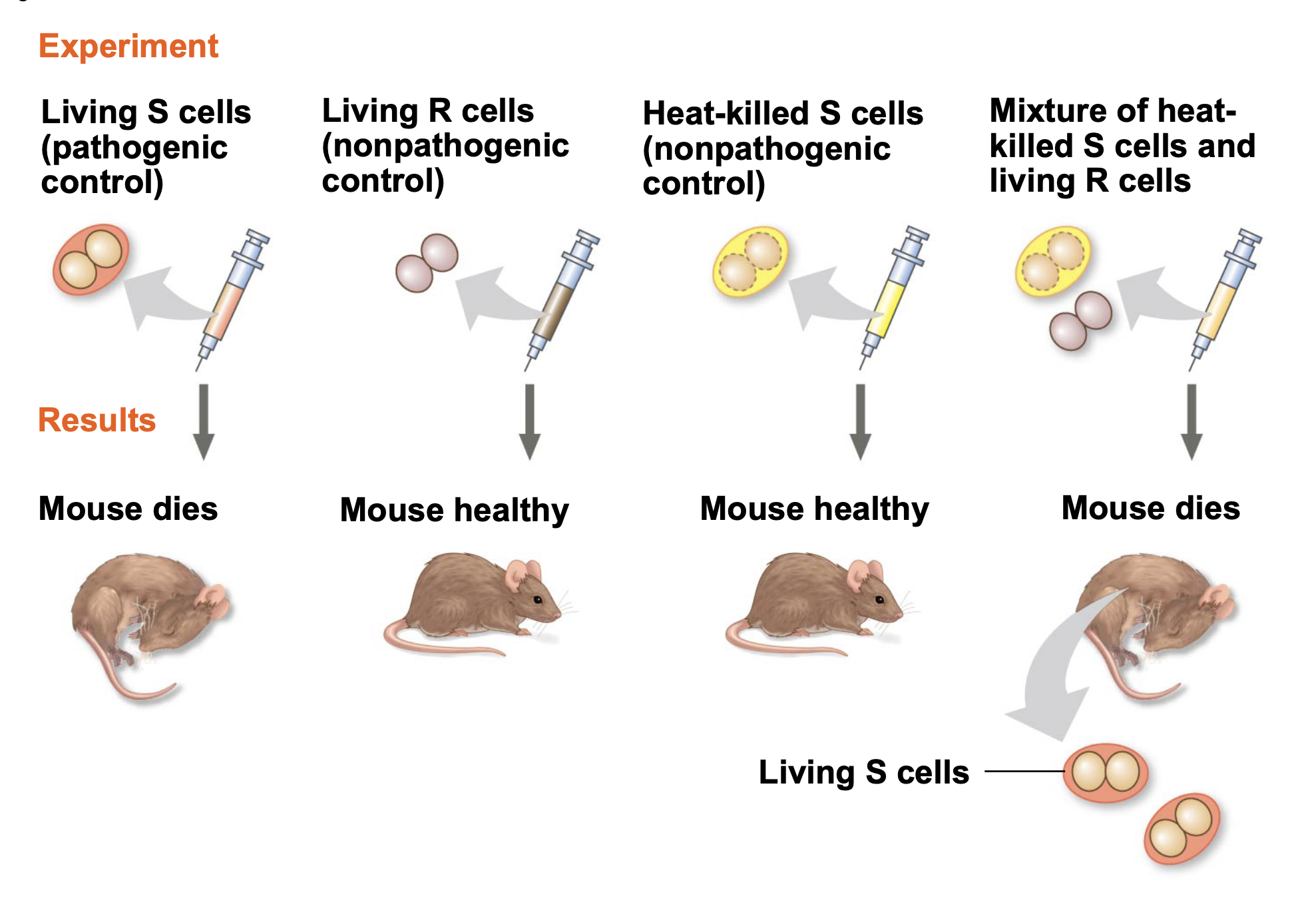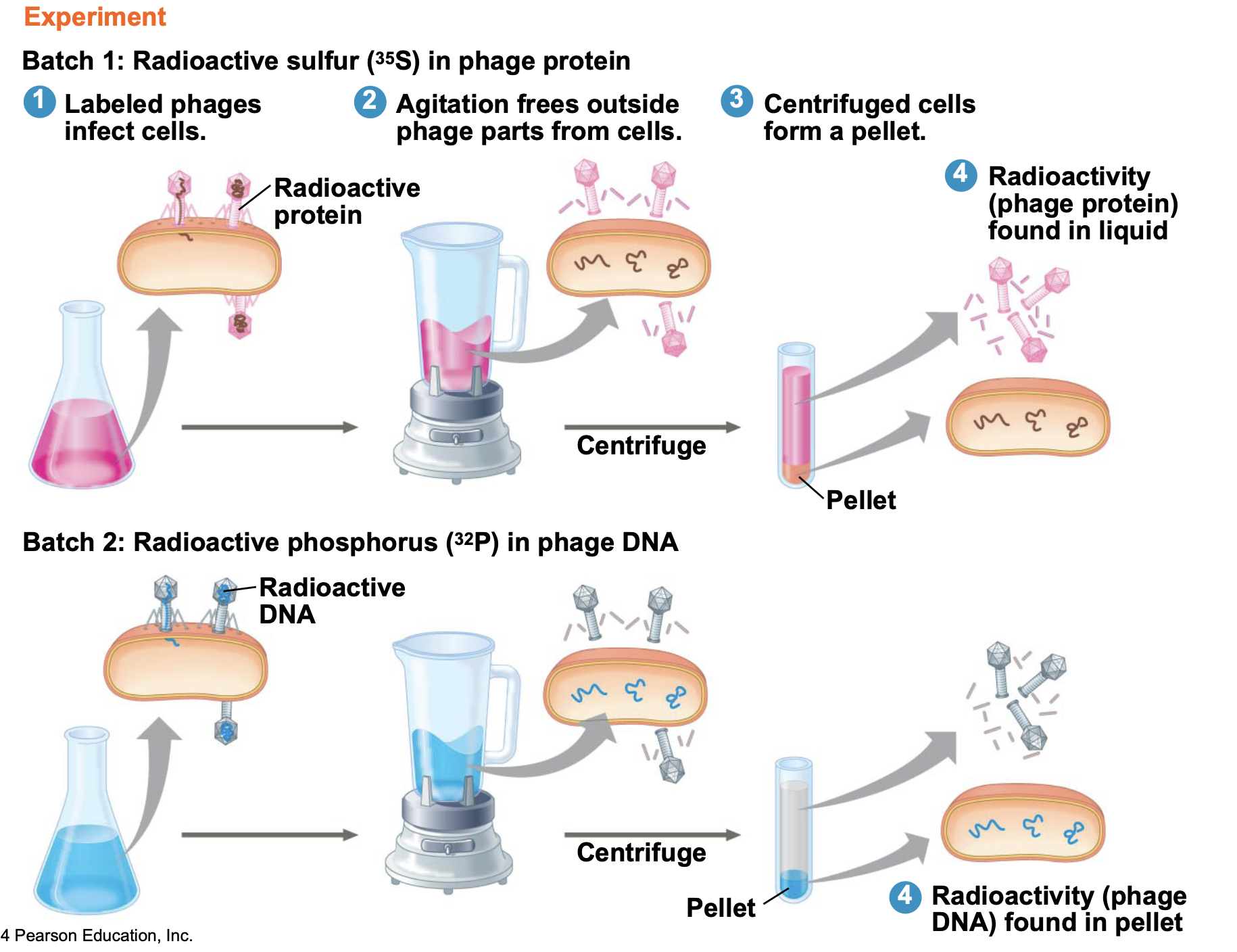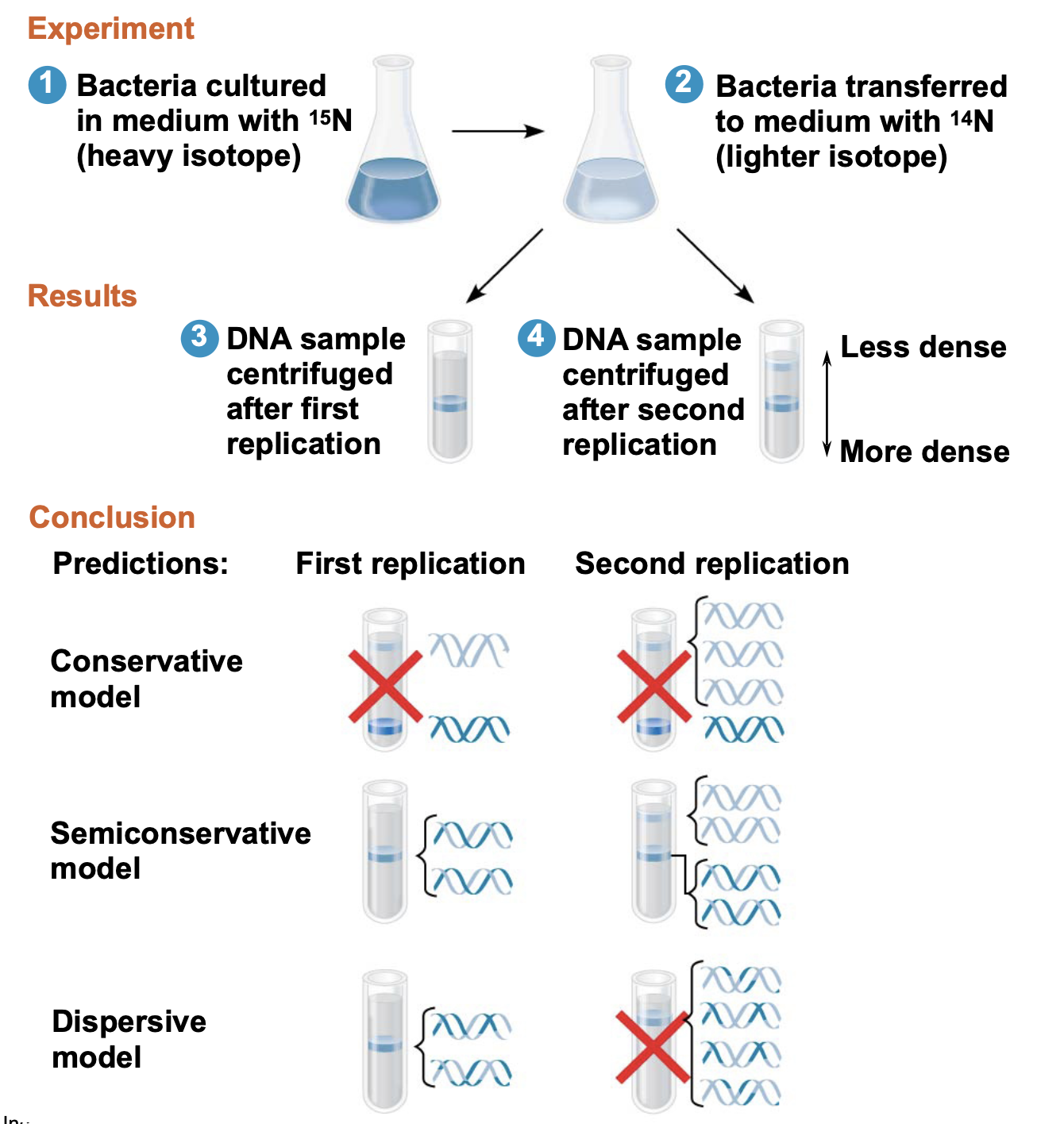CHATER 16 AP BIO
1/22
Earn XP
Description and Tags
Name | Mastery | Learn | Test | Matching | Spaced |
|---|
No study sessions yet.
23 Terms
DNA Ligace
An enzyme that joins DNA fragments together by forming phosphodiester bonds, essential for DNA replication and repair.
DNA Polymerase I
An enzyme involved in DNA replication that catalyzes the removal of RNA nucleotides from the 5' end of the RNA primer and replaces them with DNA nucleotides. It also plays a role in DNA repair.
DNA Polymerase III
An essential enzyme in DNA replication that synthesizes new DNA strands by adding nucleotides to the growing chain, specifically catalyzing the addition of nucleotides to the 3' end of a pre-existing DNA strand or RNA primer.
double Helix
The structure of DNA, consisting of two intertwined strands that coil around each other, forming a spiral shape. This configuration is crucial for the stability and replication of genetic information.
helicase
An enzyme that unwinds the DNA double helix during replication, separating the two strands to allow access for DNA polymerases. It is essential for initiating DNA replication by creating a replication fork.
lagging strand
The discontinuously synthesized DNA strand that is replicated in short segments, known as Okazaki fragments, during DNA replication. It is synthesized away from the replication fork.
leading Strand
The continuously synthesized DNA strand that is replicated in the same direction as the replication fork during DNA replication. It allows for smooth and efficient synthesis of new DNA.
mismatch repair
A cellular process that corrects errors made during DNA replication, specifically mismatched base pairs, ensuring genetic fidelity.
nuclease
An enzyme that breaks the phosphodiester bonds that connect nucleotides to form nucleic acids, such as DNA and RNA. Nucleases are essential for DNA repair, replication, and recombination in living organisms. They also remove unnecessary DNA and foreign nucleic acids from cells.
nucleotide excision repair
A DNA repair mechanism that removes damaged nucleotides from DNA and replaces them with the correct ones, ensuring the integrity of the genetic material— using the guide of the correct segments
Okazaki fragment
Short DNA segments synthesized on the lagging strand during DNA replication, which are later joined together by DNA ligase. (about 100-200 nucleotides long)
origin of replication
Sites where the replication of a DNA molecule begins
primase
An enzyme that synthesizes short RNA primers during DNA replication, providing a starting point for DNA polymerase to begin synthesis.
RNA primer
An already existing RNA chain bound to a template DNA to which DNA nucleotides are added during DNA synthesis.
replication fork
The Y-shaped region where the DNA double helix is unwound and separated into two single strands during DNA replication.
semiconservative model
The model of DNA replication in which each new DNA molecule consists of one original strand and one newly synthesized strand, ensuring genetic continuity.
single strand binding protein (SSBP)
Proteins that bind to single-stranded DNA during replication, preventing the strands from reannealing or forming secondary structures.
telomerase
An enzyme that catalyzes the lengthening of telomeres. The enzyme includes a molecule of RNA that serves as a template for new telomere segments.
telomere
The repetitive nucleotide sequences at the ends of eukaryotic chromosomes that protect them from degradation and prevent fusion with neighboring chromosomes.
topoisomerase (gyrase)
Helps relieve the strain from the twisting of DNA strands in front of helicaseby creating temporary breaks in the DNA strands, allowing them to unwind and then rejoining them.
What is Griffith's Experiment? (Transformation)
Griffith's experiment demonstrated the phenomenon of bacterial transformation.
A groundbreaking study on bacterial transformation demonstrated the phenomenon of genetic material transfer between organisms, showing that non-virulent bacteria could become virulent when exposed to heat-killed virulent strains.

What is the Hershey-Chase Experiment? (DNA or Protein??)
The Hershey-Chase Experiment was a pivotal study that used radioactive labeling to demonstrate that DNA, not protein, is the genetic material in viruses, specifically showing that phages inject their DNA into bacterial cells during infection. (They used bacteriophages)

What is the Meselson-Stahl Experiment? (How does DNA actualy replicate Experiment)
The Meselson-Stahl Experiment was a landmark study that provided evidence for the semi-conservative model of DNA replication. By using isotopes of nitrogen, they demonstrated that each new DNA molecule consists of one original strand and one newly synthesized strand. This experiment involved growing bacteria in a medium containing heavy nitrogen and then switching them to a medium with light nitrogen, allowing researchers to analyze the density of the DNA after replication.
